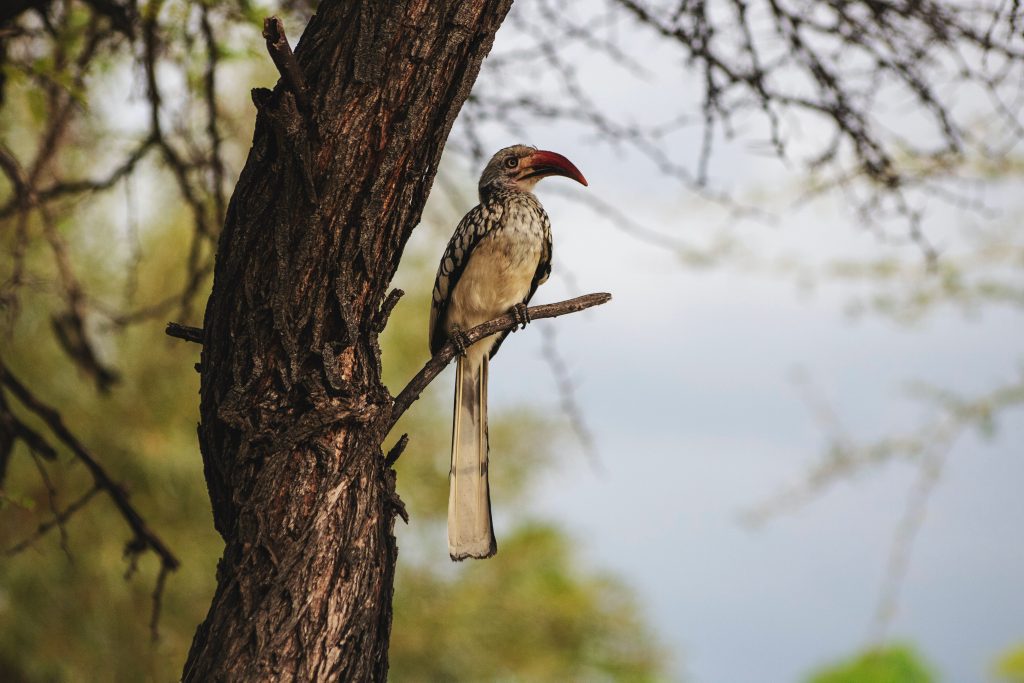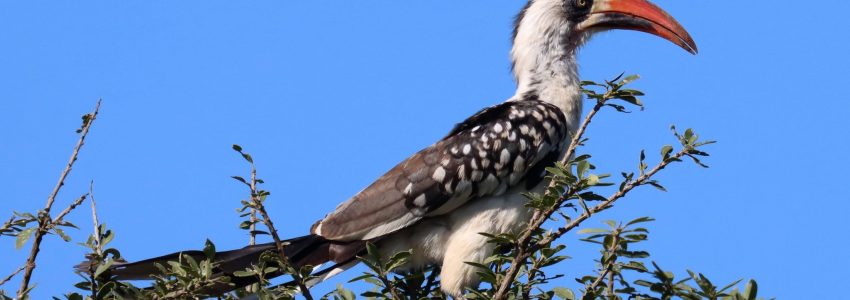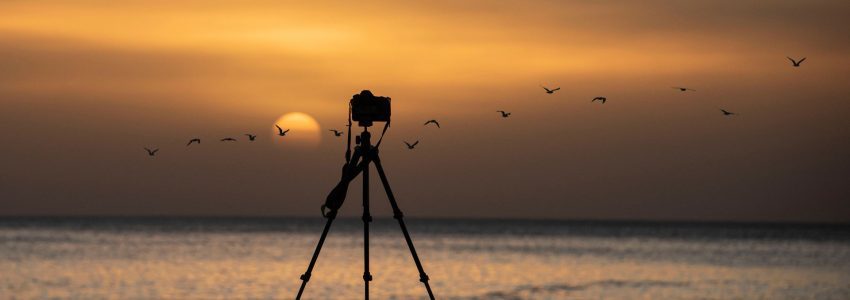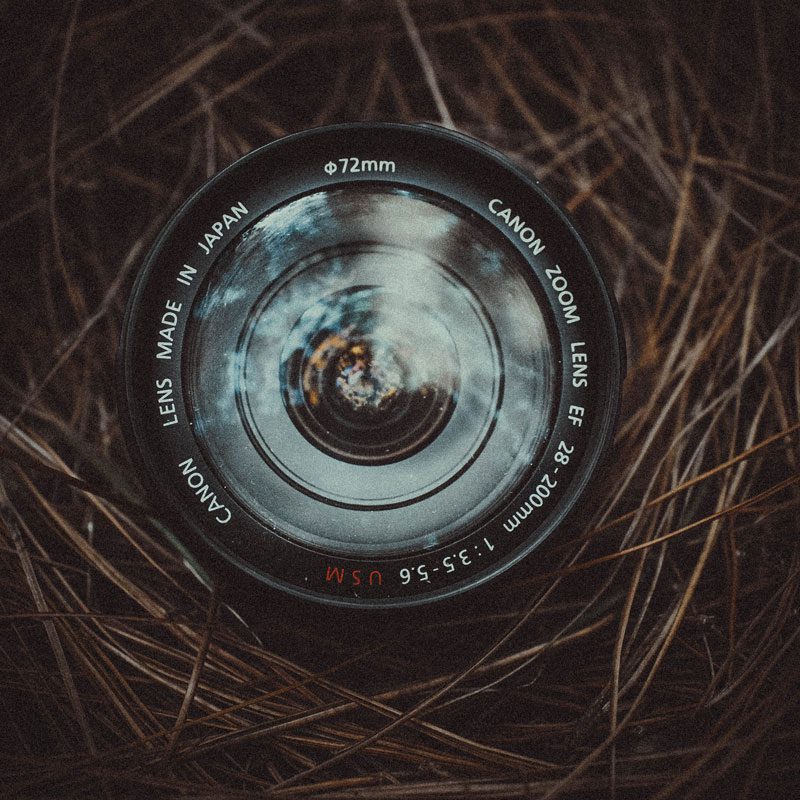The Tanzanian Red-Billed Hornbill (Tockus ruahae) is found in open, wooded savanna with sparse groundcover, especially areas heavily trampled by game or livestock, and feeds mostly on insects, small mammals, and rarely, on seeds and fruit. They are common on alluvial flood plains with occasional large trees, and in Mopane Colophospermum mopane woodland; wanders into more open habitats in dry season.
Identification
It is one of the smaller hornbill’s. The adult has a grey-brown head and grey neck with ear coverts streaked white. It boasts a broad white post-orbital stripe, narrowly streaked grey, from above eye to nape. Its back is black with a central white stripe and underparts are white. The coverts are sooty brown, each with a large white central spot, and the greater secondary coverts being mostly white.
The flight feathers are black with small white spots across the centre primaries, outer secondaries are black, inner secondaries white with a black base, retrials dark brown with narrow cream edges.
The bill is red with a narrow yellow base. The eyes are yellow with black skin around the eye and facial skin pink. The legs and feet are grey.
The immature hornbill will look the same as the adult but the bill assumes the same colour as the adult within a year. The juvenile will be the same as the adult but with eyes that are grey, changing to brown as it ages. The bill is a bit small, but more orange with a black patch at the base of the lower mandible in both sexes. The wing coverts are finely edged buff.
Voice
The Tanzanian Red-Billed Hornbill issues high, clucking notes, usually given in long series that accelerates and breaks into faster double notes during territorial Bobbing display, given with head down: kok kok kok kok kok kok kokok kokok kokok kokok.
The first syllable of the double note is longer and more intense than the second. Shorter sequences or single notes are used when the hornbill is in alarm, contact or threat. It will make low growling sounds in close contact, screeches when frightened, and gives squark of fear when suddenly surprised. Chicks beg with high piping notes, and females and chicks give harsh squawks when receiving food.

General Habits
The hornbill is usually territorial, found in pairs or small family groups, but may gather in flocks in the dry season. It spends much time running about on ground; regularly sunbathes and dustbathes. It is known to fly with direct flap-and-glide, returning to roost in trees close to the trunk or large branches, and reverting nightly to a favourite roost in summer breeding territory.
Foraging & Food
Most food items are taken from the ground by the hornbill by digging with its bill in loosen soil, detritus or herbivore droppings. It rarely pursues prey on foot but feeds mainly on small insects, favouring beetles, ants, termites, or flies and their eggs or larvae. In summer, its diet is often supplemented with larger arthropods including grasshoppers, centipedes, termite alates, scorpions and solifugids. Sometimes it will eat small vertebrates including reptiles, or even birds’ eggs and nestlings (eg Crimson-breasted Shrike and Red-billed Quelea), or scavenges dead rodents. They will rarely eat small seeds and fruits, eg of Shepherds-trees (Boscia spp) and corkwoods (Commiphora spp).
Breeding
The hornbill is a monogamous, solitary nester, and is territorial. Male and female display together, bobbing up and down with head bowed and wings held close to body.
They will nest in a natural cavity in a tree, 0.3-9 m up. The female will inspect the nest holes and is often courtship-fed and brought lining by the male. The nest entrance is often only 30-40 mm wide, sealed by the female from inside, using own faeces, to narrow, vertical slit 10-15 mm wide. Cavity 200-250 mm diameter. Most nests have an escape hole above the main chamber. 2 – 7 eggs will be laid over an interval of 2 – 4 days. The female will remain on the nest during incubation and be fed by the male.
The female leaves the nest when oldest chick is 16 – 24 days and helps the male deliver food. The chicks will reseal the nest entrance. Nestling period is 39 – 50 days and then the hornbill chicks remain hidden near the nest for a few days after fledging before joining adults to forage.
If you wish to see the Tanzanian Red-Billed Hornbill on one of our tours, take a look at the following tours available to do this:
https://www.tanzaniabirding.com/…/31-days-grand…/
https://www.tanzaniabirding.com/…/14-days-southern…/
Contact us to book your birding experience at www.tanzaniabirding.com.
Source: Roberts Multimedia



